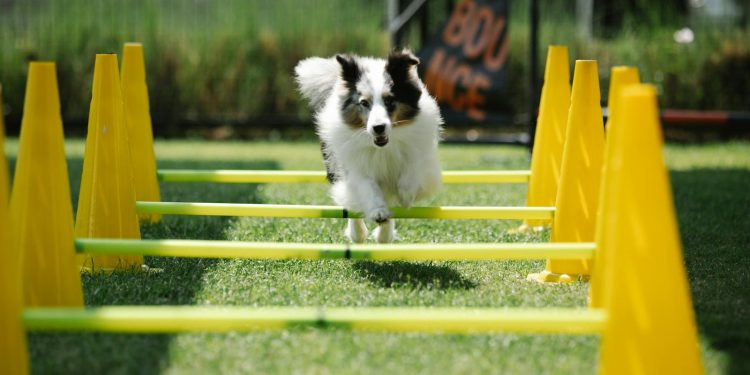Introducing your dog to a canine obstacle course can be an incredibly rewarding experience for both you and your furry friend. Whether you want to participate in competitive events or simply have fun in your backyard, obstacle courses provide an excellent way to keep your dog physically fit, mentally stimulated, and deeply bonded with you. To succeed in training your dog for an obstacle course, it takes patience, consistency, and a step-by-step approach that keeps your pet engaged and excited. This guide will help you embark on that journey, offering practical tips and insights to make training smooth and enjoyable.
Understanding the Basics of Obstacle Courses
Before diving into training, it’s important to understand the different components that make up a canine obstacle course. Common elements include jumps, tunnels, weave poles, A-frames, see-saws, and tire hoops. Each obstacle requires specific skills, and teaching your dog to navigate these obstacles safely and efficiently is key to their success. Your dog should become familiar with each element individually before attempting to complete a full course. The training process can be broken down into manageable parts, allowing you to build a strong foundation before moving on to more advanced obstacles and sequences.
Getting Started with Basic Commands
Basic obedience training is the foundation of successful obstacle course training. Commands like “sit,” “stay,” “come,” and “down” are essential for maintaining control throughout an agility course. Dogs need to be able to follow instructions without hesitation to ensure their safety during the more physically demanding parts of an obstacle course. Practice these commands in various environments so that your dog can perform them consistently despite distractions. The more solid your dog’s obedience skills are, the smoother your obstacle training journey will be.
Introducing Your Dog to Equipment
When starting with equipment, always go slow and allow your dog plenty of time to get comfortable with each obstacle. Start with easier equipment like tunnels or jumps set at a low height. Encourage your dog to explore each obstacle at their own pace. Use positive reinforcement such as treats, praise, and toys to create a positive association with each piece of equipment. For example, when introducing a tunnel, use treats to lure your dog through it. Always keep the training sessions short and fun, so your dog doesn’t become frustrated or overwhelmed.
Building Confidence with Positive Reinforcement
Positive reinforcement is a powerful tool in training your dog for an obstacle course. Reward your dog for every success, no matter how small. This can mean giving them a treat, praising them enthusiastically, or letting them play with a favorite toy. The goal is to make the training sessions as enjoyable as possible so that your dog looks forward to each activity. Remember to keep your expectations realistic—learning new obstacles can take time, and each dog progresses at their own pace. Celebrate small victories and keep the experience upbeat to build your dog’s confidence.
Breaking Down Complex Obstacles
Some obstacles can be more challenging than others and may require a step-by-step approach. For instance, weave poles can be particularly difficult for some dogs to learn because they require a combination of flexibility and coordination. To train for weave poles, you can start with open channels that gradually close as your dog becomes more comfortable. This allows your dog to get used to moving in and out of the poles without too much pressure. Similarly, the see-saw can be intimidating for dogs who are not used to the movement. Begin by having your dog walk on a stable plank before introducing movement, and always reward them for their bravery.
Practice Handling Techniques
In an obstacle course, the handler’s role is just as important as the dog’s. You need to master your handling skills to effectively guide your dog through the course. This means practicing your body positioning, hand signals, and verbal cues. Dogs are incredibly attuned to body language, and even small movements can provide direction. Work on staying calm, consistent, and confident in your commands. Practice moves such as front crosses, rear crosses, and sending your dog ahead of you. The more you refine your handling skills, the clearer your communication will be, helping your dog navigate the course more efficiently.
Keeping Sessions Short and Focused
Training sessions should be kept short and engaging to maintain your dog’s enthusiasm. Most dogs have limited attention spans, and overworking them can lead to frustration or burnout. Aim for sessions that last 10-15 minutes, focusing on one or two obstacles at a time. If your dog seems to be losing interest, it’s best to end on a positive note with a simple task they can easily complete. Short, focused sessions are more effective than long, drawn-out training sessions, as they help your dog stay motivated and eager to learn.
Overcoming Fear and Hesitation
It’s natural for dogs to be hesitant about certain obstacles, especially those that involve heights or moving parts. If your dog shows fear or hesitation, it’s important to be patient and avoid forcing them into the obstacle. Take a step back and work on building their confidence gradually. For example, if your dog is afraid of the A-frame, start by having them walk on a smaller ramp or use a flat plank on the ground. Gradually increase the difficulty as your dog becomes more comfortable. Always reward attempts, even if they don’t fully complete the obstacle—it’s the effort that counts.
Creating a Safe Environment
Safety should always be your top priority when training your dog for an obstacle course. Make sure that all equipment is sturdy, stable, and appropriate for your dog’s size. Check for any sharp edges or unstable parts that could pose a risk. Start with low-impact exercises and gradually work up to more challenging obstacles to prevent injury. It’s also important to be mindful of your dog’s physical limitations—young puppies and senior dogs may need modified obstacles or lower jumps. Warm up before each session with a light walk and cool down afterward to help prevent injuries.
Combining Obstacles into a Course
Once your dog is comfortable with individual obstacles, you can start combining them to create a mini-course. Begin with just two or three obstacles in sequence, focusing on smooth transitions between each one. Gradually add more obstacles as your dog gains confidence and experience. Use clear commands and consistent cues to guide your dog from one obstacle to the next. The goal is to build fluidity and flow so that your dog understands how to move seamlessly through the course. Keep the challenges appropriate for your dog’s skill level and always offer plenty of praise and rewards.
Preparing for Competitions
If you’re interested in taking your obstacle course training to the next level, you might consider entering competitions. Local agility clubs often host trials that are open to beginners, providing a great opportunity to test your skills in a supportive environment. Before entering a competition, make sure your dog is comfortable working around distractions such as other dogs and loud noises. Practice in different locations to help your dog get used to new environments. Competitions are a fun way to showcase your training progress, but remember that the ultimate goal is to have fun and strengthen the bond with your dog.
Making Training Enjoyable for You and Your Dog
The most important part of training your dog for an obstacle course is to make sure it remains a positive and enjoyable experience for both of you. Dogs are highly perceptive and can easily pick up on frustration or stress, so it’s crucial to stay patient and keep the mood light. Use toys, treats, and plenty of praise to keep your dog motivated. Mix up training routines to keep things interesting, and take breaks if either of you needs a rest. Training for an obstacle course should be a journey of discovery, fun, and partnership—embrace the process and celebrate each achievement along the way.









Discussion about this post